Aqua Nautilus researchers discovered a new elusive and severe threat that has been infiltrating and residing on servers worldwide since early September 2021. Known as HeadCrab, this advanced threat actor utilizes a state-of-the-art, custom-made malware that is undetectable by agentless and traditional anti-virus solutions to compromise a large number of Redis servers. The HeadCrab botnet has taken control of at least 1,200 servers.
This blog will delve into the details of the HeadCrab attack, examining its methods of operation, techniques used to evade detection, and steps organizations can take to safeguard their systems.
What is Redis?
Redis is an open-source, in-memory data structure store that can be used as a database, cache, or message broker. By default, Redis servers do not have authentication enabled and are meant to run on a secure, closed network rather than being exposed to the internet. This makes default Redis servers that are accessible from the internet vulnerable to unauthorized access and command execution.
A Redis Cluster provides a way to run a Redis installation where data is automatically divided and stored across multiple Redis nodes. Within a cluster, there is a Master server and Slave servers, allowing for easy replication and synchronization of data.
One of the default Redis commands is SLAVEOF, which designates a server as a Slave server for another Redis server in the cluster. When a server is defined as a slave, it will synchronize with the Master server, including downloading any Redis modules present in the Master.
Redis modules are executable Shared Object files that can be used to enhance the functionality of the server in various ways. A module is loaded onto a server by uploading it and using the MODULE LOAD command through the Redis port. Redis modules use the Redis API to perform various tasks related to server management and control such as defining custom commands with the RedisModule_CreateCommand API.
In recent years, Redis servers have been targeted by attackers, often through misconfiguration and vulnerabilities. As Redis servers have become more popular, the frequency of attacks has increased. You can read about further attacks such as Redigo malware and TeamTNT targeting Redis servers.
Attack Flow
This story begins with an attack on one of our honeypots when a threat actor targeted a Redis server. The server was eventually compromised using the SLAVEOF command, setting it as a Slave server of another Redis server controlled by the attacker. The Master Redis server then initiated a synchronization of the Slave server which in turn downloaded a malicious Redis module, the HeadCrab malware, onto the Slave server (our honeypot). This technique has been utilized by attackers for some time and allows them to load malicious Redis modules onto affected hosts.
As depicted in the screenshot below, these are the Redis command logs obtained from our inbound network data collection. The attacker starts by listing all available modules, configuring the server to allow for the upload of a new module, and downloading the module to the /tmp directory.

Setting the victim Redis server as a slave server
Once the module was downloaded to the /tmp directory on the victim server, it was loaded into the Redis process using the MODULE LOAD /tmp/<module_name> command. As demonstrated in the screenshot below, the attacker attempted to load multiple modules before finally succeeding.
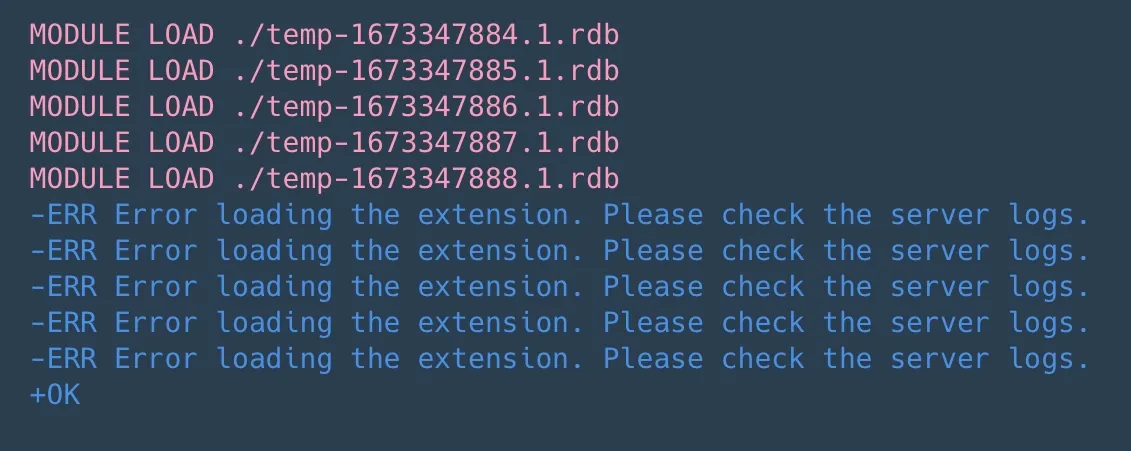
HeadCrab malware module loading
Upon reverse-engineering the loaded module, we discovered a sophisticated, long-developed malware. It provides the attacker with numerous advanced abilities and eventually full control over the targeted server. The module introduces 8 custom commands, named with the pattern rds*, used by the attacker to carry out actions on the compromised server. A comprehensive list of the malware’s capabilities and commands is discussed in the Technical Analysis of the HeadCrab Malware section.
Our honeypot showed that the main impact of the attack was resource hijacking for cryptocurrency mining. The miner configuration file was extracted from memory and showed that the mining pools were mostly hosted on private legitimate IP addresses. Inspection of these IP addresses revealed that they belong to either clean hosts or a leading security company, making detection and attribution more difficult. One public Monero pool service was found in the configuration file but wasn’t used by the miner in runtime. The attacker’s Monero wallet showed an annual expected profit of almost 4,500 USD per worker, much higher than the typical 200 USD per worker.

We discovered not only the HeadCrab malware but also a unique method to detect its infections in Redis servers. Our method found approximately 1,200 actively infected servers when applied to exposed servers in the wild. The victims seem to have little in common, but the attacker seems to mainly target Redis servers and has a deep understanding and expertise in Redis modules and APIs as demonstrated by the malware.
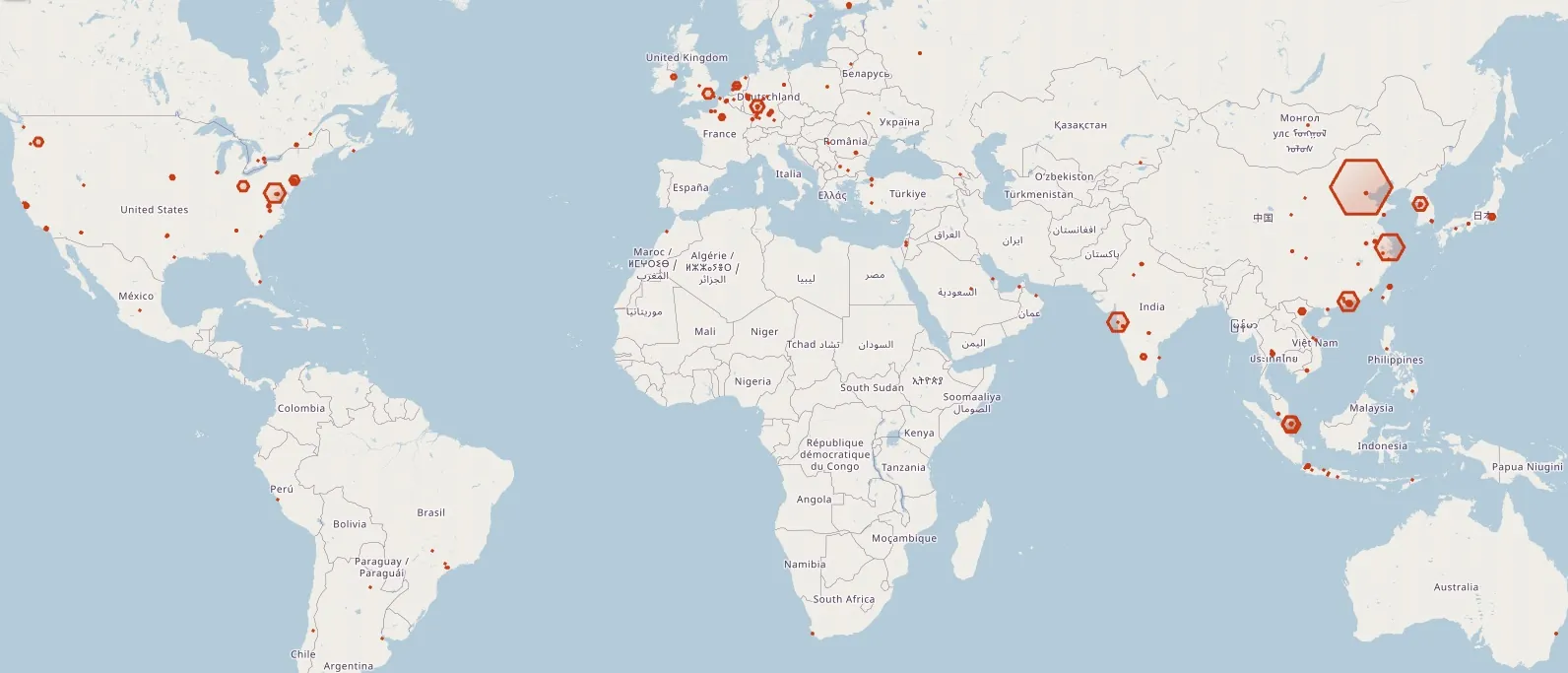
A map depicting the amount and locations of compromised Redis servers
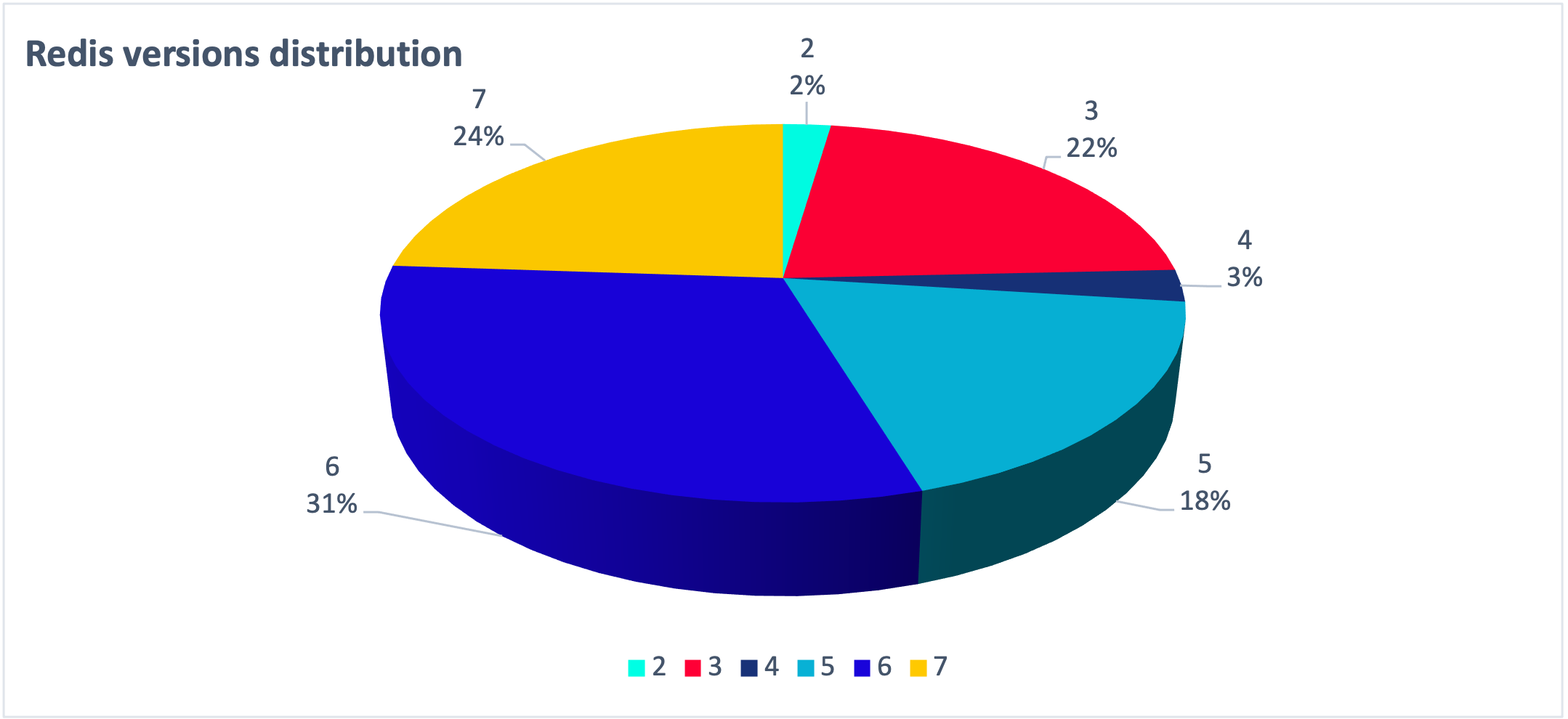
A distribution of the attacked Redis servers’ versions in the wild
We have noticed that the attacker has gone to great lengths to ensure the stealth of their attack. The malware has been designed to bypass volume-based scans as it runs solely in memory and is not stored on disk. Additionally, logs are deleted using the Redis module framework and API. The attacker communicates with legitimate IP addresses, primarily other infected servers, to evade detection and reduce the likelihood of being blacklisted by security solutions. The malware is primarily based on Redis processes which are unlikely to be flagged as malicious. Payloads are loaded through memfd, memory-only files, and kernel modules are loaded directly from memory, avoiding disk writes. Our analysis has also found that there are no detections of these binaries as malicious on Virus Total.
Technical Analysis of the HeadCrab Malware
The HeadCrab malware is a highly sophisticated and complex state-of-the-art threat. Constructed as a malicious Redis module framework, it boasts numerous options and capabilities. This section will outline the primary functions of the malware as determined through our static and dynamic analysis.
As the screenshot demonstrates, the HeadCrab sample has produced no results on Virus Total (MD5=c5b992c76b7c9fa3b9bd755dd3b5af76). Despite our attempts to acquire additional samples, we were unable to find any, reinforcing our suspicions that this is a highly evasive, novel malware.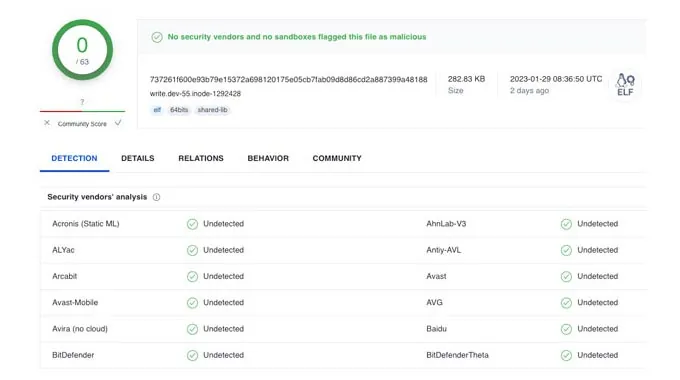
Verifying that it runs only once upon execution
Upon initial execution, the malware utilizes the RedisModule_OnLoad function which is triggered when the Redis server loads the module. The malware then saves the addresses of relevant Redis API functions for later use and checks if a module named rds is already loaded, and, if so, immediately exits without conducting any malicious actions.
Initial environment scoping
The connection information that initiated the module loading is stored for future checks. In addition, the malware checks if it runs as a privileged root user or as a less privileged user named redis.
Placing emphasis on operation security (magic numbers)
The module can be loaded with 2 arguments (magic numbers) which are in fact 2 global magic numbers that are used as encryption keys and to validate that the operator of it is really the threat actor. Later, the malware can do some manipulations on these magic number in various locations across its execution flow. The module can be loaded with or without the magic numbers, and this will affect some of the functionalities during the malware execution.
If the module is loaded with the 2 arguments, some of the Redis default commands (8 commands: Module, Client, Debug, Shutdown, Monitor, Slaveof, Replicaof, Config) are being overridden by commands which mostly return errors. This is done to avoid the malware detection. If the module isn’t loaded with the 2 arguments, this step is skipped.
The modified default commands are the following:

Furthermore, the malware deletes the Redis log file and empties it if it was recreated by truncating it to size 0.
Making preparations
Some inspections are made by the malware to decide on the course of action. We will not get into the detail of these inspections, but for instance /testing path and the execution date are inspected and based on that some of the functionalities are being executed or not.
The signal handling functions were replaced and used by the malware to communicate with its child processes.
Hidden code execution
The malware locates the path to the dynamic loader so it can execute processes. The dynamic loader can be used to execute process under its name by simply providing a path to the wanted executable as an argument. This can be used to bypass security solution which detect malicious files based on examining processes execution. Since the dynamic loader is a legitimate binary, it won’t be marked as malicious, and malware can hide itself from these security solutions.
Execution from memory
The malware tries to create a fileless file with the help of memfd_create syscall. If it succeeds, it creates 10 memfd or temp files and saves them for later usage.
Emphasis to execution in containers
The malware checks if the process ID is below 31. We speculate that this is done to detect whether the service is running in a container. If the malware doesn’t run on a container several service management programs like systemd, initd, upstart and more are checked. If any of them are installed, they are marked and will later be used to place persistent services and scripts in the appropriate location. We assume the malware skips this step on containers as it will be ineffective.
Creating new Redis commands
The malware then creates new Redis commands, which are used to enable the threat actor to operate the malware:
- rdsa This command accepts two arguments. One is a path to Redis config file and the second is a path to a malicious Redis module. This function adds a line to the Redis config that loads the malicious module with magic numbers. In order to gain further persistence for the malware, it obscures the
loadmodulecommand output. This command is used to load the malicious module and by adding padding to the output printed to screen it hides its activity. - rdss Executes a command with
popenand returns the process output as the command output - rdsp Replaces the default commands with malicious functions to evade detection.
- rdsi Updates the magic numbers used in encryption and empty logs by truncating them.
- rdsm
MONITORis a Redis debugging command that streams back every command processed by the Redis server. It’s also replaced by the rdsp command or loading the module with 2 arguments. This new command is responsible to revert the change on the MONITOR command – reenabling debugging of the server. - rdsc Listens to an incoming connection on a desired port and enables to establish an encrypted communication channel with a C2 server. The available commands are described in detail in the appendix section below. To emphasize some of its great capabilities, the malware can create a new socket and connect it to the C2 command socket, tunnel network to another IP address and port pair, execute shell commands, sends a file content to the C2, writes data to an open memfd file, read content of a saved memfd file and send back to C2, load a fileless kernel module, and many other strong capabilities.
- rdsr Establishes an encrypted communication channel with a C2 server. Same as in rdsc above.
- rdsx Restores overridden command and restores them back to default Redis commands.
In the screenshot below you can see our simulation of some of these commands:

An example to default commands being overridden and restored
Who is HeadCrab? Or, What is HeadCrab?
The question is why do we call the threat actor and the malware HeadCrab. The answer is simple. The threat actor left us a note. And when we are saying “us”, we really mean US – Aqua Security. The HeadCrab threat actor left a “miniblog” inside the malware.

As you can see in the screenshot above, the threat actor is identifying as HeadCrab, a monster from the game HalfLife which attaches itself to humans and turns them to zombies. This makes perfect sense since we’ve seen this threat zombifying Redis servers and using them to move laterally to other servers.
Furthermore, the threat actor also makes a blog entry which is dedicated to the Nautilus team. Looks like he reads our blogs. This reference is for a blog about Redigo. We recently discovered Redigo which is a novel malware that targets Redis servers. In our blog Aqua Nautilus Discovers Redigo — New Redis Backdoor Malware, we wrote that the attacker exploited a vulnerability that allows escaping from the LUA sandbox and led to Remote Code Execution (CVE-2022-0543) on the targeted server. After a further review of the newly found malware and a personal dedicated comment in the malware to Aqua Security, we realized that the Redigo malware is also exploiting the master-slave technique rather than the LUA sandbox escape.
This threat actor is highly discrete, so we couldn’t find many indications to its activity in the open source. We did find one indication to the ‘pamdicks’ which appears in the “miniblog”. In a blog by Trend Micro, it is mentioned that a rootkit named netlink is used to alter the CPU-related statistics (can hide the pamdicks process and CPU load) to hide cryptomining. Although this is not 100% aligned with the “miniblog”, it is most probably what the threat actor is referring to.
Runtime Detection
HeadCrab malware is designed to stealthily attack Redis servers whether they are running in a container or on the VM. Our Redis honeypot is protected by Aqua’s Cloud Native Detection and Response (CNDR) solution that utilizes low-level eBPF events to detect in uses real-time malicious behavioral indicators to identify stealthy attacks such as HeadCrab malware.
As you can see in the screenshot below from our Aqua platform, the first detection shows that a new executable was dropped to /tmp path. This is the Shared Object (SO) file. Next, a detection of the SO file is injected, which is highlighted in timeline and severity.

The next detection in the timeline is the reverse shell over socket, which is created by the HeadCrab malware.

Lastly, we can see the XMRIG malware written and executed in-memory.

As you can see, the detections show what processes are responsible for these events which can further clarify what happened and the sequence of events. Any of these detections may indicate that something bad is happening in our Redis container or VM. But all of them together imply the gravity of this attack and depict a coherent chain of events since initial access to impact.
Mapping the Attacks to the MITRE ATT&CK Framework
Here we map the components in the attacks described above to the corresponding techniques of the MITRE ATT&CK framework: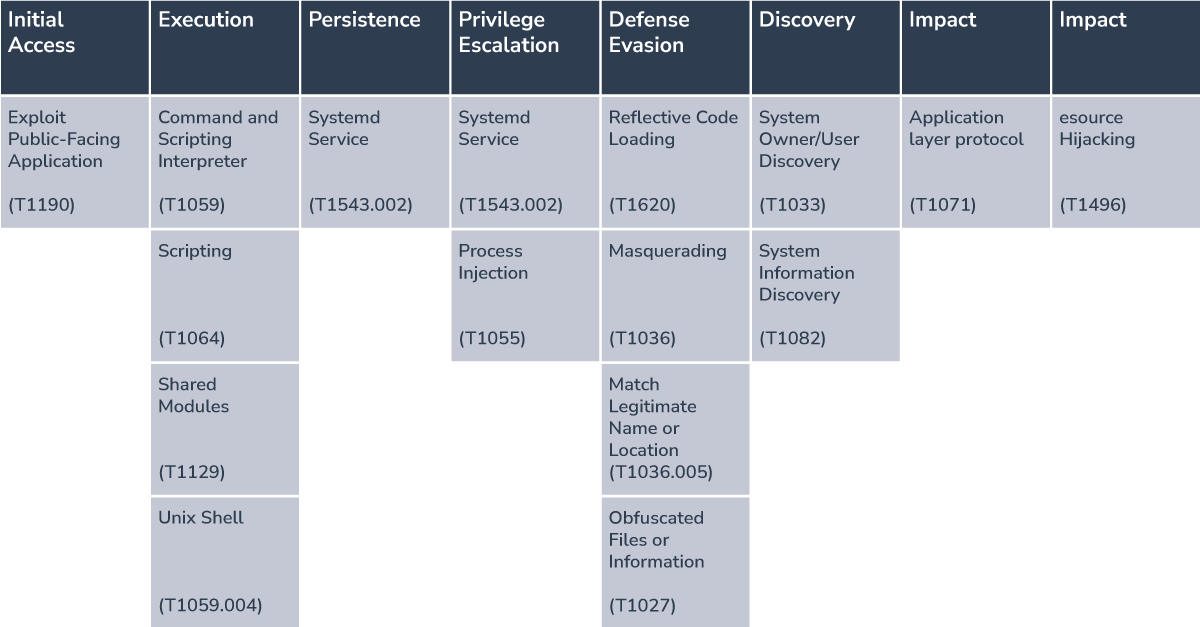
Summary, Remediation, and Mitigation
In this blog, we bring to light the menace of HeadCrab, the threat actor responsible for creating an advanced malicious Redis framework. We delve into the inner workings of the malware and showcase its extensive capabilities. Our investigation has revealed that HeadCrab’s botnet has already taken control of over 1,200 servers, all infected with this malware. It is our conviction that HeadCrab will persist in using cutting-edge techniques to penetrate servers, either through exploiting misconfigurations or vulnerabilities.
Immediate remediation for infected servers
Throughout this blog, we have repeatedly emphasized the significant capabilities of the HeadCrab malware.
If your server has been compromised, it is essential to assume that your network has also been breached and to immediately initiate your incident response protocol. This will help you to detect the extent of the breach, isolate the infected systems, and clean up the impacted environments. While it is possible to remove the malware by deleting the associated services and scripts, removing the loadmodule from the Redis configuration, and restarting the server, the attacker still retains several abilities, including the ability to drop files, execute binaries, steal SSH keys, scan and communicate with other systems, and load kernel modules. This makes it possible for the attacker to move laterally across the network. Completely removing the attacker’s presence from the server can be a difficult task. To ensure the security of your network, we recommend saving a backup of the Redis database to a file and migrating it to a new server that has proper authorization and traffic controls and is not directly accessible from the internet, if possible.
Mitigation
To mitigate risks to Redis servers, you’d like to harden the environments by assuring the Redis configuration is aligned with security best practices.
In this blog the threat actor is using the “master-slave” technique to replicate the database from a remote server at his disposal with the target server (our honeypot). This feature was originally created by Redis to improve performance and create redundancy but is actively used by attackers to promptly infect targets and evade detection.
We advise taking the following steps to harden your Redis servers’ security:
1 – Redis is designed to be accessed by trusted clients inside trusted environments.
This means that usually, it is not a good idea to expose the Redis instance directly to the internet or, in general, to an environment where untrusted clients can directly access the Redis TCP port or UNIX socket.
2 – Whenever you’re using Redis in the cloud, it’s better to enable protected mode for enhanced security. Protected mode ensures that the database only responds to the loopback address and generates an error as a reply to all the nodes connecting from other IP addresses.
3 – Accept communication from known hosts using the bind parameter
Your Redis server will only listen to connections made to the address specified in via the bind option. This is a security measure that allows for dropping connections not made inside the network.
4 – If the ‘slaveof’ feature is not being actively used, we strongly advise disabling it.
5 – You can read further security advice in the Redis security management section or in a blog they wrote about this matter.
Aqua platform can help you scan your Redis configuration file for misalignment to best practice. Utilizing custom assurance policy, you can customize a new policy to scan your Redis configuration.
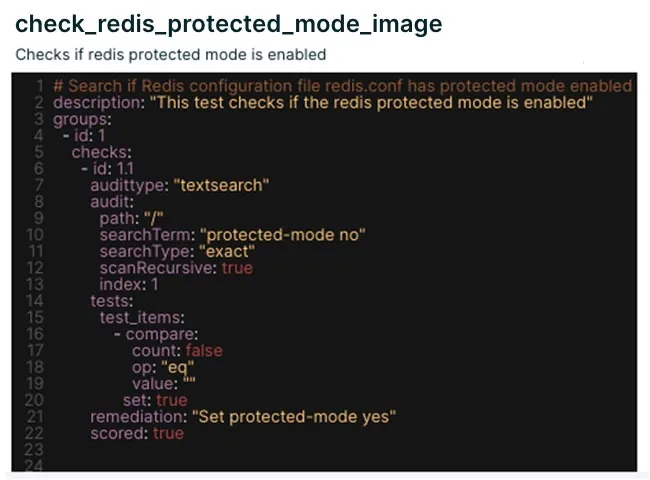
As can be seen in the screenshot above, we customed 2 scan policies, which look for protection mode disabled, namely Redis allow unauthorized access to the server. Furthermore, our second policy looks for bind 0.0.0.0 which means that any IP address can connect to the Redis.
We scanned a Redis vanilla container image with a permissive configuration that allows bind 0.0.0.0 and protection is disabled. Aqua platform detected both misconfigurations and alerted us on the issue.
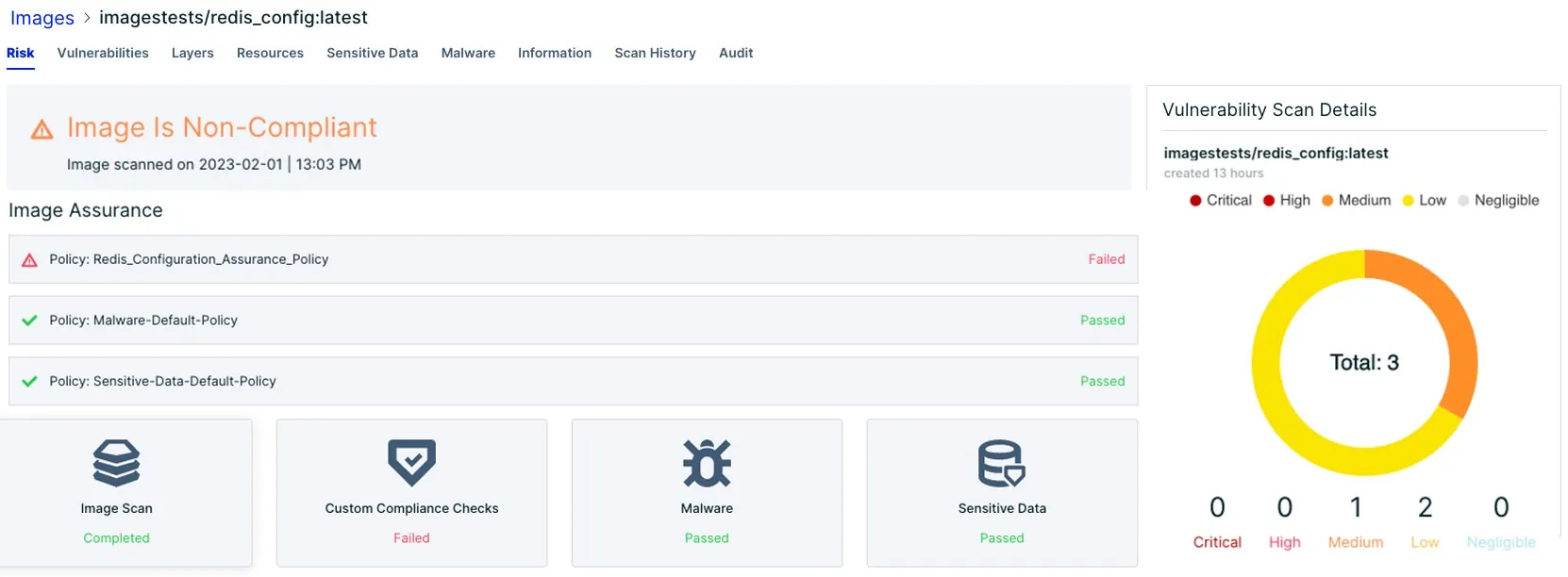
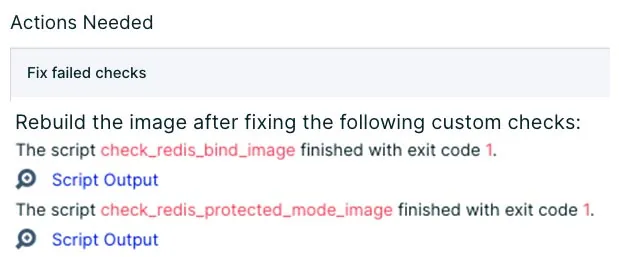
Some further steps can be taken to mitigate threats to your software development lifecycle in the cloud, we recommend following these guidelines:
• Unknown threats and zero-days are here to stay. Even if you do everything right you can’t always protect your runtime environments from such attacks. Thus, you need to monitor runtime environments. Deploy the Aqua Lightning Enforcer to protect your runtime environments. Runtime monitoring is a fundamental practice to help mitigate issues quickly and minimize disruptions. The monitoring process also applies to the runtime environment where suspicious activity can occur (e.g., download of malicious binary files).
• Scan your software supply chain. You can use open source tools such as Chain-bench designed to audit your software supply chain stack for security compliance based on a new CIS Software Supply Chain benchmark.
• Empower your developers, DevOps and security teams with tools that scan for vulnerabilities and misconfigurations. Along with Aqua’s tools for organizations, you can find particular open-source tools such as Trivy to scan for such vulnerabilities.
The Aqua platform scans container images with tools that rely on a constantly updated stream of threat intelligence – aggregate sources of vulnerability data (CVEs, vendor advisories, and proprietary research) which ensure up-to-date, broad coverage while minimizing false positives.
Appendix: Available malicious C2 commands accepted by rdsr and rdsc0x1: kill child process and close files. |
Indications of Compromise (IOCs)
| Type | Value | Comments |
|---|---|---|
| Monero wallet ID | 85o3miXCHdWduE6V2xTMVsEofzrDoTyquGAXwW35mAPuRtkW6Xf5jET35QNSnHQL68gZNh96RrZBnPuGgwR6FoyoUEhbZJP | |
| HeadCrab malware MD5 | c5b992c76b7c9fa3b9bd755dd3b5af76 | |
| Redis Master | 116.202.102.79 | |
| Reverse shell IP addresses | 178.62.32.29 | |
| Mining pool IP addresses | 44.224.209.130 | |
| Monero pool | 44.224.209.130 | |
| Hijacked IP serves as a mining pool | 182.74.78.10 |
Source: https://blog.aquasec.com/headcrab-attacks-servers-worldwide-with-novel-state-of-art-redis-malware
